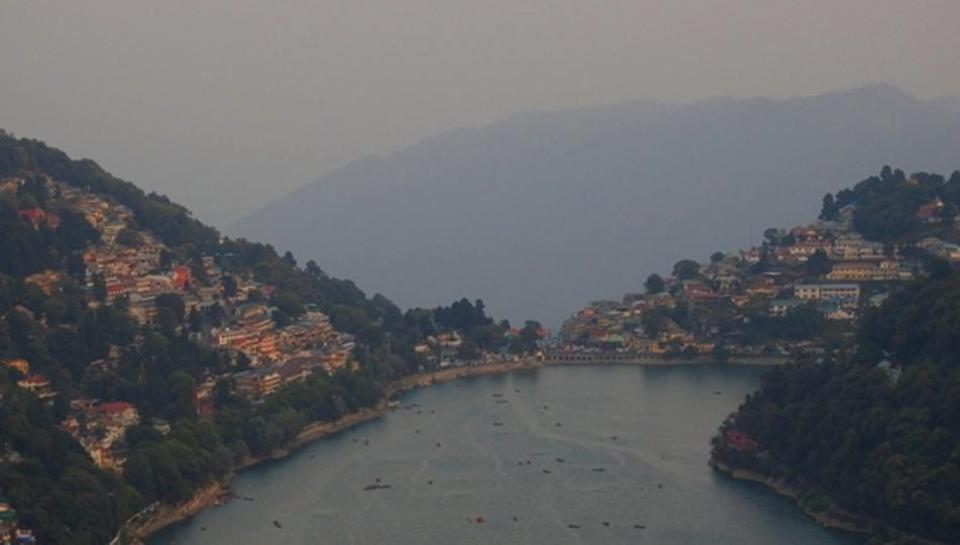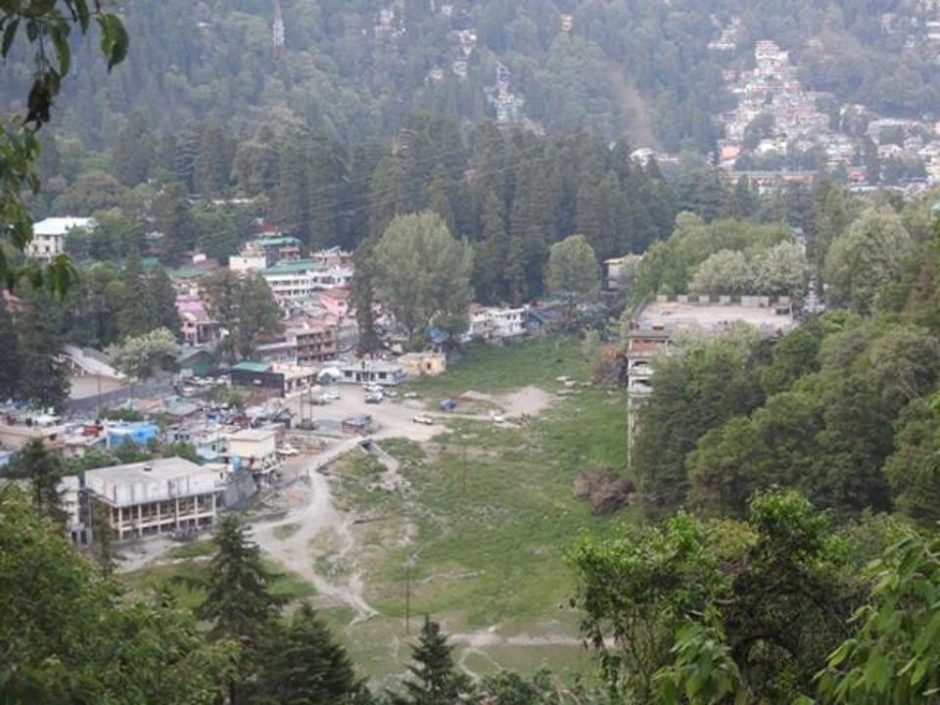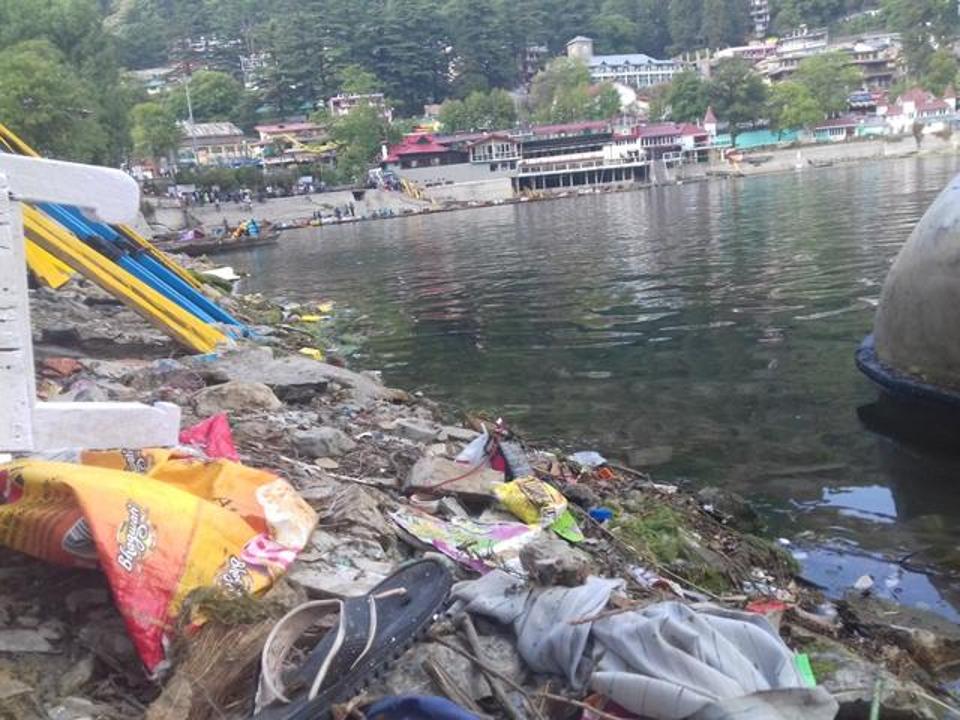In giving life to Nainital, its lifeline is dying.
Article, blog, News, StoriesWith 0 commentsIn giving life to Nainital, its lifeline is dying.
Water retention in Naini Lake is at an all time low even as construction debris, pollutants and solid waste is choking the reservoir’s bed
The Naini Lake is dying. The lifeline of tourist town of Nainital is choking to death. Encroachments, construction debris, siltation, dumping of solid waste and other pollutants are slowly snuffing life out of the natural Himalayan water reservoir.

Too many buildings have come up on the slopes(Neeraj Santoshi-HT Photo)
Add to it the drying up of its most important source of recharge — Sukhatal —and other factors such as climate change, comparative warming up of the Himalayas, and increasing stress due to anthropogenic factors such as phenomenal increase in number of people dependent on it for their daily water needs, and the picture gets clearer.
What is happening in Naini Tal (lake) — the only source of water supply to eponymous town — is symptomatic of what is happening in other Himalayan lakes in the state, such as Bhimtal and Khurpatal, with habitations around them in varying degrees.
Numbers speak of the stress that Naini Lake is facing. The population in the hill station, spread over 11.73 sq kms, has swelled from 7,589 in 1881 to 41,377, according to 2011 census. Add to this the floating population of 10,000 to 15,000 tourists and a substantial number of lawyers who reach here every day to attend hearings in the high court. The number of buildings in Nainital, most of them on slopes, has increased from 520 in 1901-02 to over 7,000 at present, including over 150 hotels and resorts.
Vishal Singh, an expert on Himalayan water bodies and deputy executive director at Doon-based Centre for Ecology Development and Research (CEDAR) explained how and why the stress is increasing on the lake.

Buildings have come up on the bed of Sukhatal lake. The seasonal lake used to recharge Naini lake. Sukhatal’s area has reduced from 46,000 sq metres to a mere 22,000 sq metres. (Neeraj Santoshi-HT Photo)
“First, its primary source, the Sukhatal lake, situated over a kilometre up on the Ayarpatta ridge, has almost dried up. A seasonal lake, which would fill up in monsoon, it used to supply nearly 50 per cent of the subsurface water to the Naini Lake. But now even when it fills up, people around it pump out the water, as they don’t want it accumulating around their constructions on the lake bed. Also, with an inflow of solid waste and construction debris, especially cement, the bed of the Sukhatal has become impervious to the water seepage and sub-surface flow,” he said.
Singh along with researchers from Department of Geography, Cambridge University, had conducted a study of the critical water sources of Naini Lake during 2014-16.
“We found that revival of Sukhatal was critical to the long-term survival of the Naini Lake. Also, all the ridges and depressions on the slopes around the lake are recharge zones for the lake. But with a huge number of constructions coming up on the slopes, the runoff has increased and seepage has decreased,” he added.
Noted environment activist Ajay Singh Rawat, instrumental in filing several PILs in Supreme Court and Uttarakhand High Court seeking to protect the ecology of the Himalayan water bodies, especially Naini lake, said Sukhatal’s area has reduced from 46,000 sq metres to a mere 22,000 sq metres with constructions having come up on its bed.
Dr BC Pandey, senior professor and former head of the geography department at Kumaon University, has seen how the lake ecosystem has been dying slowly over last four decades.
“The green cover around the lake has decreased. The depth of the lake, which was said to have been around 90 feet in the British era, decreased to 78 feet in our study in the mid-70s. Now owing to siltation and entry of solid waste, the depth has been further reduced,” he said.
Pandey stressed that the town has surpassed its carrying capacity. “Now people from this area are shifting to construct houses near Bhimtal and other nearby lakes. If this trend is not checked, the day is not far when the survival of the other Himalayan lakes will be at severe risk,” he warned.
The withdrawal of water —up to 18 million litres per day (MLD) — has not helped either. The water level in the lake keeps fluctuating. Last year it had fallen 14 feet below normal and this year it is still 1.75 feet below the normal. Realizing this, the state irrigation department last year decided to curtail the supply.
“We can’t help it. We have to supply water to people here. We reduced it from 18 MLD to 14 MLD last year. This year, we are supplying 8 MLD but in peak tourist season, the demand increases to around 12 to 13 MLD,” said Sunil Tiwari, executive engineer at Jal Sansthan here.

Plastic and other solid waste piled along Naini Lake shore. (Neeraj Santoshi-HT Photo)
Rawat said a death knell has been sounded for Nainital. “There are many lakes in the 200-sq km area within a distance of 20 to 25 kms from Nainital and all of them are under threat. All these Himalayan water bodies are wetlands but the state government has not yet notified them. The builder mafia is taking advantage of this fact and have gone ahead with construction on the lake beds and on the lakes’ shore,” he said.
Rawat said despite the ban on group housing and buildings over two storeys in Nainital, several such constructions are coming up in many areas. “This used to be a land of 60 lakes once. But now it will be enough if they can save just the remaining few,” he said.
Credit/Original Article : Hindustan Times & Neeraj Santoshi
